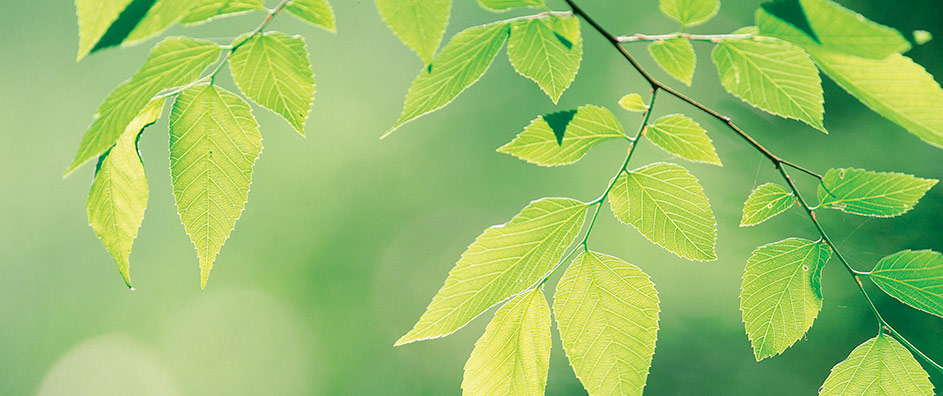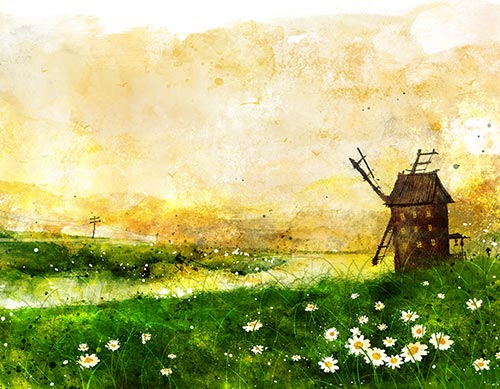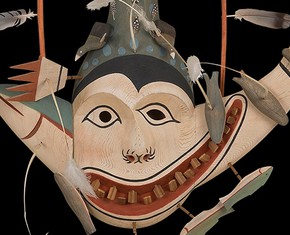The views expressed in our content reflect individual perspectives and do not represent the authoritative views of the Baha'i Faith.
 The sun is doing its beaming best to penetrate a smoggy day here in northeastern China; back home in Ontario, Canada, where winter has been harsh and apparently never-ending, the mercury struggles to rise to stream-swelling temperatures. As I tap my early-morning keyboard, the finish line is in sight, friends: the end of the Baha’i month of fasting is upon us! I have, once again, loved this special period of the year, and will try not to dwell on the unpleasant thoughts of how much more I could have done to benefit from the richness of dawning and anytimes of prayer and meditation. It’s my favourite time of the year, and not only because of fasting (and the best of basketball!) and days that seem brighter than they’ve ever been before. It’s also a New Day – not to mention a New Year, and “a new cycle of human power” – in my world, and welcome to it!
The sun is doing its beaming best to penetrate a smoggy day here in northeastern China; back home in Ontario, Canada, where winter has been harsh and apparently never-ending, the mercury struggles to rise to stream-swelling temperatures. As I tap my early-morning keyboard, the finish line is in sight, friends: the end of the Baha’i month of fasting is upon us! I have, once again, loved this special period of the year, and will try not to dwell on the unpleasant thoughts of how much more I could have done to benefit from the richness of dawning and anytimes of prayer and meditation. It’s my favourite time of the year, and not only because of fasting (and the best of basketball!) and days that seem brighter than they’ve ever been before. It’s also a New Day – not to mention a New Year, and “a new cycle of human power” – in my world, and welcome to it!
Baha’i communities everywhere will be/have been celebrating Naw-Ruz (“New Day” in Farsí) at the end of their nineteen days of spiritual detachment and daylight “deprivation”; I have to be honest, the longer I fast, the less deprived and the more gifted I feel. There is food and dance and song and holy words. “If we are not happy in this Day, for what time do we wait?” asked Abdu’l-Baha. Naw-Ruz is a holy day on the calendar, hours of gratitude and festivity and renewed hope. (And, to be sure, for many there is a certain kind of relief that the fasting period is over!)
 Naw-Ruz is a Persian festival that has been celebrated for nearly 1400 years, one that is now shared by the Baha’i Faith, youngest of the world’s religions. Baha’is haven’t had it easy in Iran, the birthplace of their Faith and its worldwide community; in the midst of celebration, we also remember the suffering of too many millions all over a divided world. Still, Naw-Ruz is a time of mutual respect and shared cultural richness, in hundreds of places around the globe, for Muslims and Baha’is and anyone of Iranian extraction. It is also a symbol, after the long and painful winter of humanity’s “coming of age”, that newness is possible, that suffering and sacrifice are redemptive, that spring always comes, and that coming together is the strongest thing we can do.
Naw-Ruz is a Persian festival that has been celebrated for nearly 1400 years, one that is now shared by the Baha’i Faith, youngest of the world’s religions. Baha’is haven’t had it easy in Iran, the birthplace of their Faith and its worldwide community; in the midst of celebration, we also remember the suffering of too many millions all over a divided world. Still, Naw-Ruz is a time of mutual respect and shared cultural richness, in hundreds of places around the globe, for Muslims and Baha’is and anyone of Iranian extraction. It is also a symbol, after the long and painful winter of humanity’s “coming of age”, that newness is possible, that suffering and sacrifice are redemptive, that spring always comes, and that coming together is the strongest thing we can do.
“So powerful is the light of unity that it can illuminate the whole earth,”
said Baha’u’llah, and there are lovely and hopeful little rays of it shining wherever we celebrate and remember Naw-Ruz.
I’ll say it again: what a great time to be celebrating New Year’s! All that green, all that growing, all those immoderate northern symbols of rebirth and regeneration! I hope that, at least for a loving and luxurious moment, it feels like a New Day where you are, too.
Happy Naw-Rúz!! May the spring be a season of joy for you. May your crocuses bloom.
















Comments
Sign in or create an account
Continue with Googleor